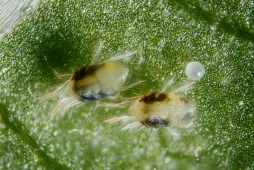Goeppertia roseopicta, foliage in color and movement
South American rainforests abound in plants with colorful and extraordinary foliage. Among them, the Goeppertia roseopicta. This variety of Marantaceae is distinguished by the patterns and movements of its leaves.
How to recognize Goeppertia roseopicta?
Calathea roseopicta is a rhizomatous plant with a bushy habit. It grows to no more than 50 centimetres in all directions.
Its round, glossy leaves have slightly undulating margins. In the botanical variety, the upper surface is dark green. Lighter green "brush strokes" run through it. Cream or pink lines enhance these patterns. The underside of the leaf blades is purple. There are also cultivars with pink and olive-green leaves Calathea 'Purple Rose) or almost black Calathea 'Dottie).
Foliage patterns are not the only distinctive feature of Goeppertia roseopicta. The plant belongs to the praying plant family. Every evening, it folds up its leaves before unfolding them again when the sun rises. This phenomenon, known as nyctinasty, enables it to protect itself from bad weather.
Goeppertia roseopicta can flower indoors. White or lilac flowers appear in the heart of the foliage.
The flowers, like the leaf blades and the rest of the plant, are non-toxic. You can grow Calathea roseopicta without risk, even if you live with young children or pets.
Our maintenance tips
Not very demanding, your Goeppertia roseopicta is content with a location without direct sunlight and plenty of humidity.
Watering
Goeppertia roseopicta appreciate freshness. Their soil must be kept slightly moist in spring and summer. But the plant doesn't like excess. Be careful not to soak the substrate!
Provide water at room temperature, without lime. You can, for example, collect rainwater or use filtered water.
Once you've watered your Goeppertia roseopicta, empty any stagnant water from the saucer or planter. It may rot the roots.
Spray
Your Calathea roseopicta loves humidity. But the air in our homes is often too dry! To remedy this, spray the foliage with non-calcareous water.
In addition to increasing humidity, misting dusts the leaves and limits pest attacks.
Repotting
Every spring, repot your Goeppertia roseopicta to give it more space.
Obtain a pierced pot of a larger size than the previous one. Don't hesitate to choose a ceramic or plastic model. These materials retain moisture and allow you to space out watering. Your Calathea roseopicta also prefers a wide pot to a deep container to give it room to grow.
Line the bottom with gravel or clay balls for drainage. Then pour in potting soil for green plants. You can lighten it by adding perlite.
Plant your subject in the middle and fill in with substrate. Water for the first time to eliminate air bubbles and encourage rooting.
Fertilization
To promote the growth of your Goeppertia roseopicta, apply fertilizer in spring and summer.
Feed your Calathea roseopicta with green plant fertilizer.
Cleaning
Clean the leaves with a clean wet sponge. This removes dust and improves photosynthesis. It's also a way of preventing mite infestations.
Prune
Remove dried or yellowed leaves.
Cutting
Cutting is carried out during the strong growth phase, generally in spring and early summer.
Take advantage of repotting to divide your Calathea roseopicta. Once your plant has been dug up, locate a rhizome with one or more stems. Each stem should have at least three leaves.
Using your hands or a clean, sharp tool, separate the rhizome from the rest of the plant.
In a pierced pot, pour a drainage layer (clay balls or gravel, for example).
Add potting soil for seedlings and plantations. Plant your graft in the substrate. To help you, you can use a pen to make a pilot hole.
Water for the first time to eliminate air bubbles and encourage rooting.
Diseases / Threats
Information
| Family | Marantaceae - Marantaceae |
| Type | Goeppertia - Goeppertia |
| Species | Goeppertia roseopicta - Goeppertia roseopicta |
| Lifecycle | Perennial |
| Foliage | Evergreen |
| Exposures | |
| Substrat | |
| Planting method |
In pots |
| Categories | |
| Tags |
Fritillary Soiffarde |
| Origin |
South America |
| Hardiness (USDA) | 10b |
| Leaf color |
|
| Flower colors |
|
Discover plants from the same family
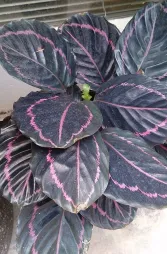
Calathea 'Dottie
Discover
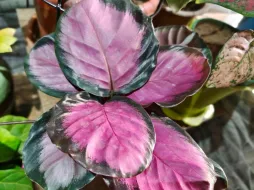
Calathea 'Purple Rose
Discover
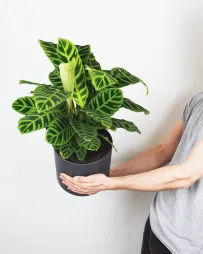
Zebra Calathea
Discover
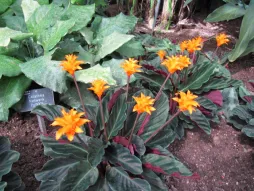
Calathea crocata
Discover














